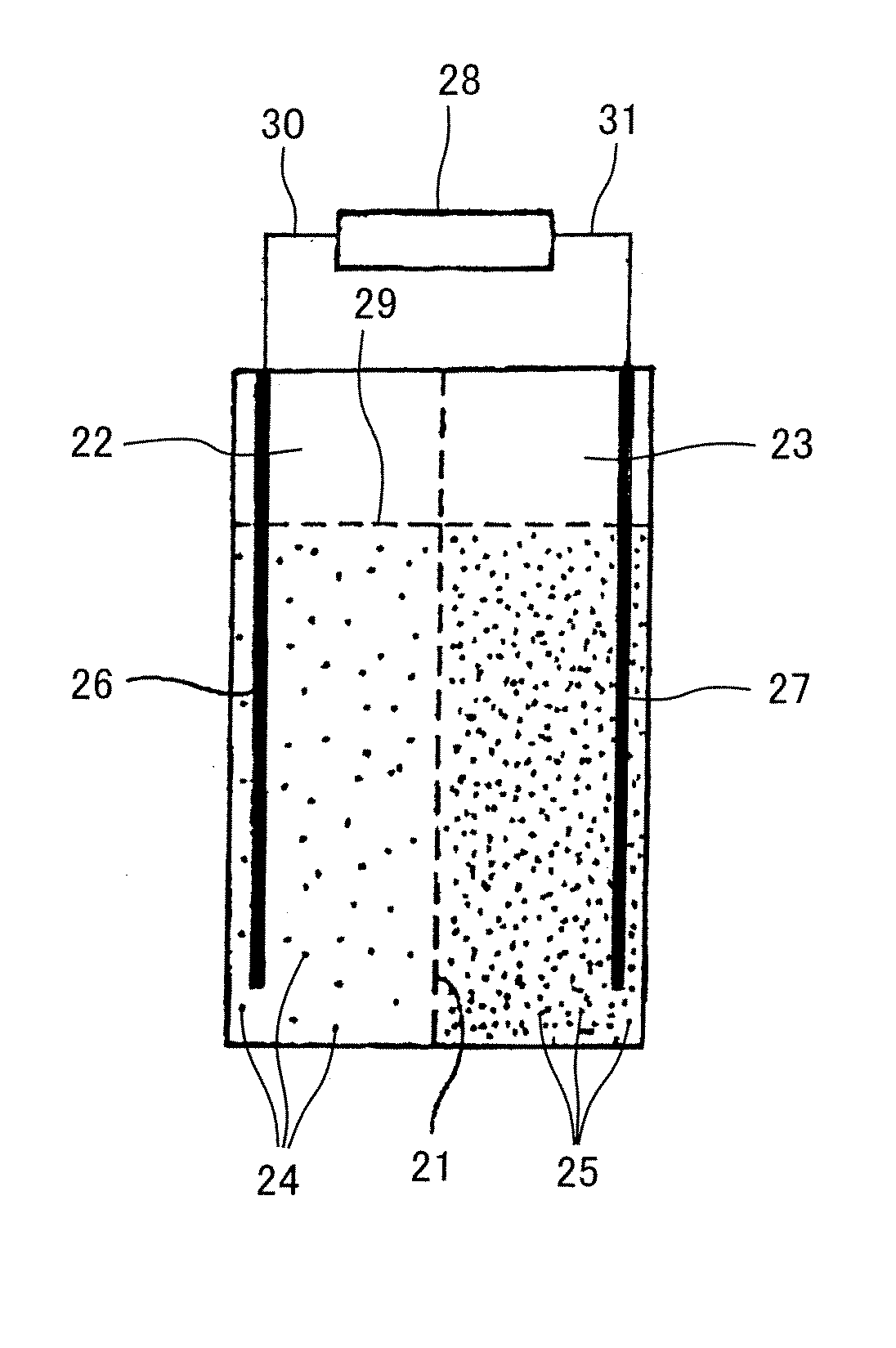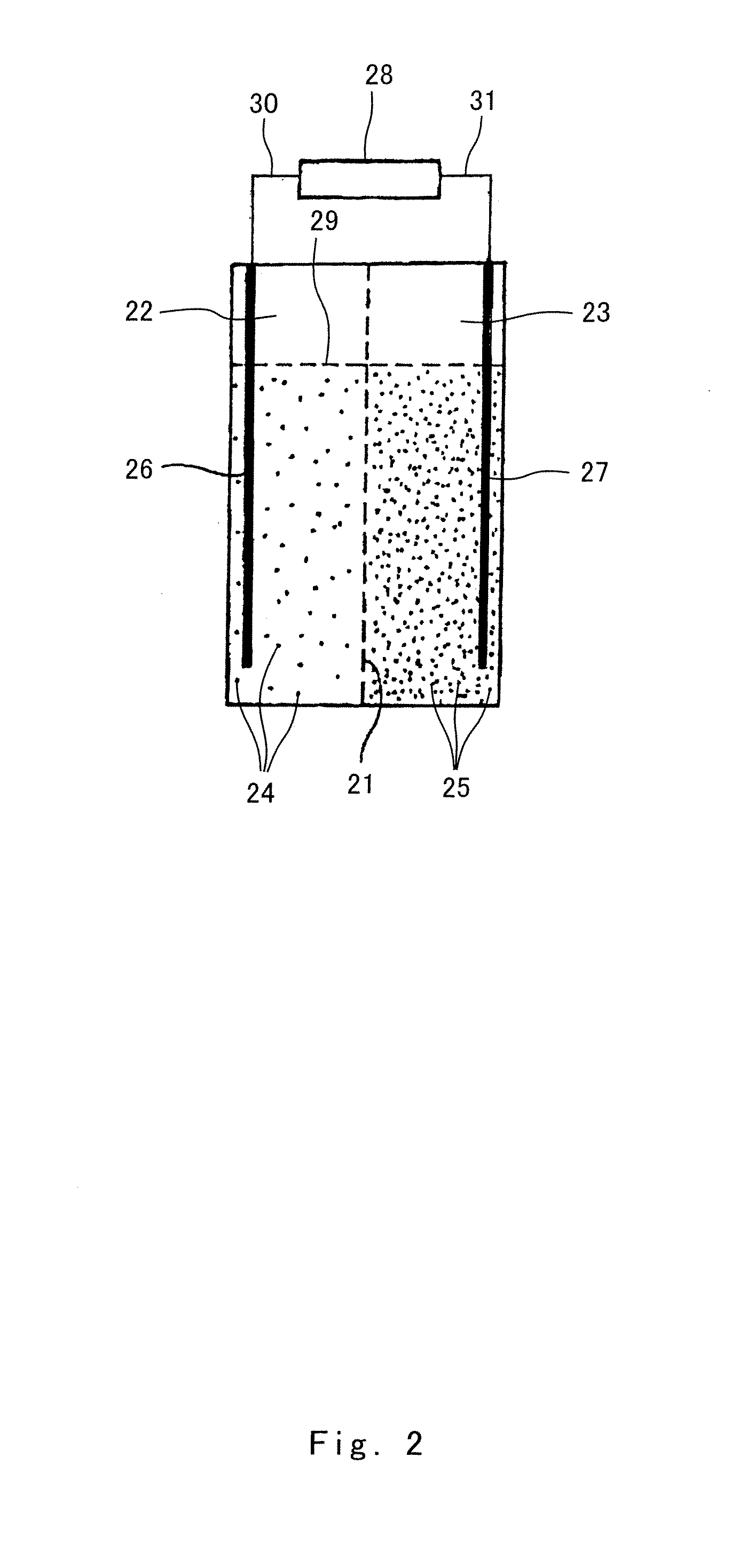Battery and heat exchanger structure thereof
a heat exchanger and battery technology, applied in the direction of nickel accumulators, cell components, sustainable manufacturing/processing, etc., can solve the problems of difficult to keep electrolytic solutions inside the separator, and inability to keep enough oxygen-permeating functions, etc., to achieve the effect of reducing production costs, avoiding short-lived battery life, and improving durability
- Summary
- Abstract
- Description
- Claims
- Application Information
AI Technical Summary
Benefits of technology
Problems solved by technology
Method used
Image
Examples
first embodiment
OF HEAT EXCHANGER STRUCTURE OF BATTERY
[0155]As described above, heat is generated due to a cell reaction in the battery. Particularly, in accordance with the airtight type battery, a person skilled in the art cannot think little of heat generated by the cell reaction. Accordingly, the airtight type battery is preferably provided with heat exchanger structure.
[0156]The conventional cylindrical battery or cubic battery or rectangular parallel-piped battery have a cooling structure that the outside of the battery casing is cooled. Therefore, it is difficult to attain the fixed cooling effect. Because in any of the cylindrical battery, cubic battery or rectangular parallel-piped battery, the direction for transmitting heat is perpendicular to the location of electrodes in the disposed direction of the separator and the active material. For example, in case of cylindrical battery, the heat shall be transmitted to the radius direction. In short, it is necessary to transmit heat to the out...
second embodiment
OF HEAT EXCHANGER STRUCTURE OF BATTERY
[0163]FIG. 6 is a perspective view showing a battery unit multilayer 81 with a heat exchanger structure of the present invention which is cooled by a fan and a wind tunnel (air carrying space). The battery unit multilayer 81 has an air carrying space 82 for carrying air in the lower part. Air inhaled by air intake fans 83a and 83b is emitted to the outside from an air carrying space 84 in the upper part through the air carrying space 82 and heat transmitting space inside the battery unit multilayer 81. The arrow of FIG. 6 denotes a direction of air ventilation.
[0164]FIG. 7(a) is a view showing longitudinal section of one example of a battery unit multilayer with a heat exchanger structure. A battery unit multilayer 81a has a configuration which consists of six battery units layered one upon the other. Each battery unit has the following constitution: An electrolytic solution is filled between a cathode plate 85 and an anode plate 83. A separator...
third embodiment
OF HEAT EXCHANGER STRUCTURE OF BATTERY
[0169]FIG. 8 is a perspective view showing one example of a heat exchanger plate 96. The heat exchanger plate 96 is made of nickel-plated aluminum. Many air carrying spaces 97 are provided in the vertical direction. In FIG. 7, the heat exchanger plate 96 may be interposed between the cathode plate 85 and the anode plate 86, and air inhaled by intake fans 83a and 83b can be carried through air carrying space 97. The heat exchanger plate is in contact with both of the cathode plate and the anode plate, and the cathode plate is connected to the anode plate by the heat exchanger plate. Therefore, the heat exchanger plate has preferably a good electrical conductivity. Aluminum has a relatively low electrical resistance and a relatively high heat conductivity. And so, aluminum has the properties suitable for the heat exchanger plate of the present invention. But aluminum has a disadvantage to be liable to be oxidized. If an aluminum plate is nickel-pl...
PUM
| Property | Measurement | Unit |
|---|---|---|
| diameter | aaaaa | aaaaa |
| temperature | aaaaa | aaaaa |
| internal pressure | aaaaa | aaaaa |
Abstract
Description
Claims
Application Information
 Login to View More
Login to View More - R&D
- Intellectual Property
- Life Sciences
- Materials
- Tech Scout
- Unparalleled Data Quality
- Higher Quality Content
- 60% Fewer Hallucinations
Browse by: Latest US Patents, China's latest patents, Technical Efficacy Thesaurus, Application Domain, Technology Topic, Popular Technical Reports.
© 2025 PatSnap. All rights reserved.Legal|Privacy policy|Modern Slavery Act Transparency Statement|Sitemap|About US| Contact US: help@patsnap.com



